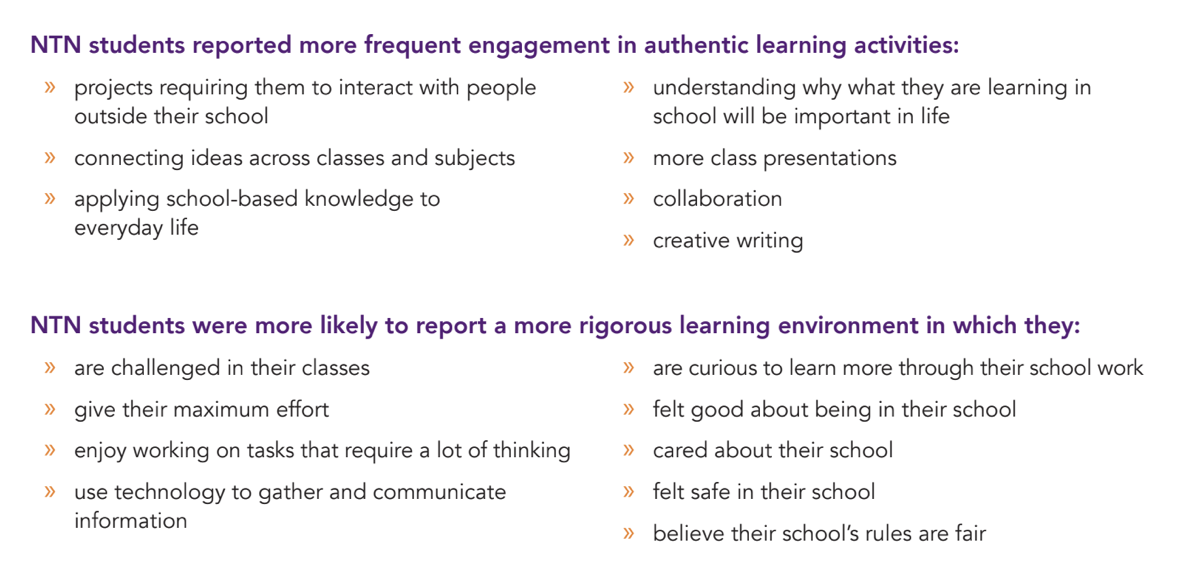The NTN Model: Where Real World Learning Provides the Purpose for Explicit Instruction
“Here’s a question, I’ll show you how it’s solved, now you have a go on your own or with your partner” is a model of teaching that many of us are familiar with. For me, in secondary Maths this would have involved a smile at my partner and the vague panic in my eyes would let her know I needed her help to get through these questions. I would later return the favour in Geography or Spanish, but that’s how we mainly got through our schooldays.
Thankfully, explicit instruction has come a long way since then, and now includes this simple but major tweak: I do, We do, You do. “Here’s a question, I’ll show you how it’s solved, now let’s tackle a few examples together before you have a go on your own (if you’re ready).”
As Hattie (2009) explains, when teachers adopt explicit teaching practices they clearly show students what to do and how to do it. The teacher decides on the learning intentions and success criteria and makes them transparent to students, demonstrating them by modelling. The teacher checks for understanding, and at the end of each lesson revisits what was covered and ties it all together.
When teachers intentionally focus on the I do, We do, You do model of explicit instruction, teacher clarity improves and student learning gains are evident. As a product of teacher education that focused heavily on teacher-led explicit instruction and feedback, I can attest that the academic research holds true in the sense that students absolutely learn and learn content well in this setting. Explicit instruction also benefits neurodivergent learners and helps them be clear about what’s expected of them.
CONTEXT IS KING
However, in the work we do, everyday with teachers across Australia, we ask them about their most common challenges. Time and time again, teachers tell us their students struggle to be active in class and they wish that students were more engaged in their learning.
But why do we have to learn this? Is the last thing we, as teachers, want to hear as we deliver through gritted teeth our explicitly taught lesson that we worked our socks off to prepare.
The NTN Model: Putting learning front and centre
The NTN Model of Project and Problem-Based Learning puts learning front and centre - whether it be teacher or student-led, but more importantly, it provides a purpose and real world context for the learning. It also enables students to gain real skills that will benefit them in life, skills the world of work and universities are crying out for: student agency, collaboration and oral and written communication.
Salesian College Sunbury Students Visit a Soap Factory to Explore How to Create Environmentally Friendly Beauty Products
A common misconception of project or problem-based learning is that it excludes explicit teaching
Looking at the image above, the three phases (in red) of the NTN model of PBL easily complement the I do, We do, You do model of explicit teaching. Similarly, depending on the subject or age group, we’d expect to see this format to varying degrees in each lesson throughout the life of the project, with a greater degree of student independence towards the end of the project.
Research shows that attending a NTN school is significantly related to higher student cognitive, emotional and social engagement and student agency.
At NTNAU we see teachers as professionals, who know their students’ capabilities and their content better than anyone. The best teachers in our Network are those who embrace both teacher-led instruction and student-centred learning, crafting meaningful learning experiences that connect with their students while delivering well-planned and structured lessons with plenty of opportunities for explicit teaching. What these teachers believe, however, is that they are not the only expert in the room, students can also learn brilliantly from each other, and explicit teaching is not the only tool in their toolbox.
“It [the NTN model] lets students see how school and the real world actually come together and that what they are learning really is relevant.”
Reach out to info@ntnau.org for more information on how we could support your staff to develop meaningful units of work with explicit instruction that fosters cognitive engagement and equips students with skills for life.





